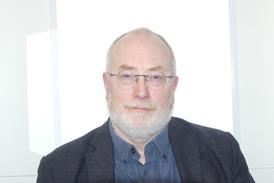One consortium’s approach to overhauling hip and knee care has brought efficiency and financial rewards while sparing patients from repeated trips to hospital. Debra de Silva and Sima Haririan explain.
The NHS is under huge pressure to provide high quality care while reducing costs. At Merton Healthcare Practice Based Commissioning Consortium, partnerships between patients, GP practices and hospitals have made this a reality.
Like many around the UK, people from Merton, south London, with serious hip and knee problems often had a long wait between visiting their GP and seeing a specialist. At hospital appointments they were sometimes found to be unfit for joint replacement, not psychologically prepared or not wanting surgery. They did not feel involved in decision making and there were high rates of cancellations or people not attending appointments. GPs were also unsure about when to make referrals.
The consortium’s 12 practices worked with the South West London Elective Orthopaedic Centre to streamline services. The centre is the largest hip and knee replacement centre in the UK and is hosted by Epsom and St Helier University Hospitals Trust.
GPs now ask patients about their preferences and use a standardised scoring system to assess whether they are eligible for surgery. People then have X-rays using the GP direct access budget and attend a pre-operative assessment clinic run by a hospital consultant and nurse at local GP practices. This “one stop” approach provides care closer to home, avoids repeated trips to hospital and gives patients and their families a chance to ask questions before being booked for surgery.
During initial testing, assessment clinics were run twice monthly in GP practices. Practices were encouraged to refer people to these clinics instead of to hospital. An orthopaedic consultant and nurse practitioner assessed the need for an operation, made a referral to hospital or community services, helped prepare the patient and their family and provided detailed written information. Discharge planning also started here, involving social services, therapists, district nurses and voluntary services.
Strong multidisciplinary working and clinical leadership across organisations made the streamlined service a reality. The approach has improved patient outcomes and ensures quicker and less costly care. The initiative is now being rolled out throughout the wider region.
Repeat savings
Prior to streamlining, people with a chronic hip or knee problem were referred to secondary care and usually had to return for one or more follow-up visits. The new assessment process has cut out the need for repeated visits, made sure people can be seen quickly, reduced operation cancellations or postponements and improved patient experience by providing care closer to home.
The service costs the same as an initial orthopaedic visit, so the price of any further follow- ups has been saved; some 700 such appointments can be saved each year in this area. Savings are also made by GPs using the structured scoring system to avoid inappropriate referrals.
Sarah Langfield, lead for outpatients at the elective orthopaedic centre, says: “The work by GPs is a vital element in identifying those who may need surgery and assessing quality of life, putting the patient in control and facilitating an objective discussion about the possibility of surgery and the patient’s psychological and social preparation.”
The GPs’ involvement has resulted in:
- improved access and equity;
- a shorter pathway;
- more targeted referrals;
- a reduced number of referrals;
- higher referral-to-surgery conversion rates (83 per cent);
- a reduced number of people not attending or cancelling;
- improved 18-week compliance by removing bottlenecks (94 per cent).
Slow start
More than nine out of 10 people are now treated within 18 weeks and did-not-attend rates and the proportion of patients who declined treatment have each been reduced by 4 per cent. This shows what a small group of practices working with secondary care can achieve.
Productivity impacts include a shorter pathway and fewer hospital appointments for those requiring a procedure. GPs are identifying those who would not benefit from surgery so there are fewer secondary care referrals and more diversions to community services.
It took a while to get the idea off the ground. It was estimated that 100 people from 12 practices would be referred during a pilot year, but in 19 months just 58 people were referred. Elective orthopaedic centre director Steve Thomas says: “It took some time to get GPs engaged but being able to show good data about patient outcomes and having patient stories from focus groups was useful.”
Streamlining services does not necessarily mean appointments can be shortened and it is important to have realistic expectations from the outset. Assessment appointments are 20-30 minutes each as this is the only time before the day of surgery that most patients and their families see the surgeon and have an opportunity to ask questions. The surgeon needs to assess whether surgery is required, plan the procedure and provide the patient with all the information they need.
Mr Thomas believes it was worth the wait: “Patients now have better access to a local service, more understanding of the rationale for their care and are able to influence decision making with their GP.
- To find out more, email Sima Haririan.
How to turn rhetoric into reality
Policy and managerial documents espouse the benefits of joint working and increased efficiency. These dos and don’ts will help make these policy goals a reality.
Do
- Test the feasibility of new services and adapt them as needed. The Merton service was tested by 12 practices from January 2009 to September 2010 before being rolled out more widely
- Meet regularly. With so many services and projects on the go it is easy to get distracted. When working across different organisations and testing new ways of working it is especially important to have at least monthly meetings to maintain momentum and get any issues out in the open
- Set up ways to measure successes from the outset. Having data about how many people were helped and how much time and money was saved was key to convincing GPs to use the service
- Consider what infrastructure and technical support is needed. It is key to invest to save. A small outlay on new resources, equipment or pathways can have significant benefits. Ensuring X-ray images could be viewed remotely at local GP practices by hospital clinicians was a vital element of this pathway
- Draw on the experience of the multidisciplinary team. The project steering team included GPs, an anaesthetist, an orthopaedic surgeon, an advanced nurse practitioner and managers. Clinical leaders from primary and secondary care and patient participation groups were vital
- Share learning from meetings. In discussing anaesthetic risk, the consultant anaesthetist highlighted complications among patients with unidentified high alcohol intake. This raised GPs’ awareness about alcohol intervention prior to making referrals
- Involve patients in streamlining services. A patient focus group was set up to hear people’s views and this helped to design the new pathway and maximise choice
- Train GPs and practice staff as soon as possible and repeat this regularly. Practice staff are often forgotten in training sessions, but their input and involvement is critical for success. The facilitative approach used by primary and secondary care staff working together focused on winning the hearts and minds of the clinicians to promote the service and each element of the care process
Don’t
- Expect changes to be immediate. Focus on sustainable step change. It took time for GPs to get used to the new system and see the benefits. It is vital to allow time for new systems and services to embed
- Forget to let everyone know what you are doing and why. It might sound obvious, but just because you think something is a good idea or there is evidence to support change does not mean others will be motivated to take part. Spending time communicating the service to all GP practices repeatedly so usage gradually increased was important
- Forget that streamlining services may affect GP practice processes. Practice managers can be targeted with extra support
- Stick with old systems and processes if they could be better. The reporting from secondary care had to improve to meet performance data requirements
- Forget to acknowledge and celebrate successes. Support from GP clinical commissioners and the primary care trust acute commissioning unit was essential. Communicating and celebrating to acknowledge support reminds people of what can be achieved when organisations work together. Successes were promoted at conferences and in newsletters



























1 Readers' comment